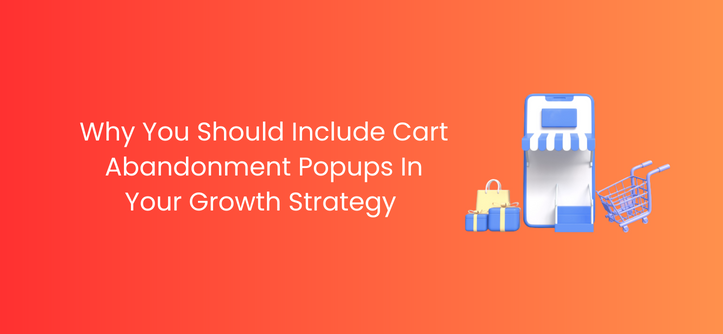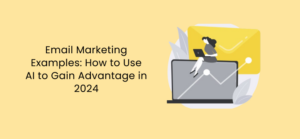You could do most things right with your marketing or business strategy and still notice that your conversion rates are plummeting. Your customers might be checking out your products, browsing through multiple pages of your website, and asking questions about new collections via live chat but still, no sales.
Abandoned carts are a common problem faced by e-commerce businesses and can significantly impact their sales and revenue.
There are various reasons why cart abandonment occurs. One primary factor is unexpected costs such as high shipping fees or additional taxes, which can deter customers from proceeding with the purchase. Another reason is the lengthy or complicated checkout process, where customers may get frustrated and abandon their carts. Additionally, distractions, like being interrupted or losing interest, can lead to cart abandonment.
As heartbreaking as that can be, there are many cart abandonment strategies for you to resuscitate your conversions and boost sales for your business.
If at this point in time, you haven’t considered including a cart abandonment popup on your website or online store, you’re doing a disservice to yourself.
What is Cart Abandonment?
Cart abandonment refers to when a shopper adds items to their online shopping cart but leaves the website without completing the purchase. It’s a common occurrence where the customer abandons their purchase at the end of their buyer’s journey.
Important Statistics You Should Know
- The average cart abandonment rate is 69.99%, according to Baymard Institute. This is an average of 48 shopping cart abandonment studies, which range from 56% to 81%.
- Mobile users have the highest cart abandonment rate—with 85.65% of shoppers failing to make it to checkout.
- According to ContentSquare, shoppers between the ages of 25 and 34 have the biggest tendency to abandon their cart (21%), with the 35-44 group following right after (20%).
If you put yourself in your customer’s shoes, you can decipher why they abandon their carts most of the time. According to a study by Baymard Institue, one of the second biggest reasons why people abandon their carts is because they were asked to ‘create an account’ during the checkout process.
Needless to say, this practice can be frustrating for a customer looking to conclude quickly with their shopping experience. Due to the instant gratification that our technologically-driven world provides, no one really wants to spend time doing mundane tasks such as filling out their details when they’re at the critical point of making a purchase decision.
So, how do you fix these issues and grow your conversion rates?
One strategy that we’ve found helpful is the use of cart abandonment popups. Those little boxes that offer incentives, discounts and the extra stuff when a customer decides to abandon their cart. Popups can greatly help to reduce cart abandonment.
Cart abandonment popups are lifesaving reminders that can positively impact your conversion rate.
Why Popups?
Popups are important for addressing cart abandonment because they serve as effective tools to re-engage and persuade users to complete their purchases. They can impact business sales or conversion rates easily.
They capture the user’s attention by appearing prominently on the screen, ensuring that the message or offer related to cart abandonment is noticed.
They also provide an opportunity to address any objections or concerns that may have led to cart abandonment. A pop up can offer solutions, provide additional information, or address FAQs to remove doubts and increase user confidence.
You can set them to be triggered by specific user actions, such as attempting to exit the website or spending a certain amount of time on a page. These triggers allow businesses to intervene at critical moments and entice users to stay and complete their purchases.
How to Fix Cart Abandonment Issues with Popups?
Now that you understand how important these popups can be for your business, let’s show you the best strategies to adopt when using popups to fix cart abandonment issues.
Use an Exit-Intent Popup
These popups are triggered when a user’s mouse movement suggests they are about to leave the website.
Displaying a popup specifically designed for abandoned carts can remind customers about the items they left behind. This popup can include a personalized message, product images, and a call-to-action button to guide them back to their cart and complete the purchase.
Be sure to include an exit-intent popup on your checkout page. This can offer a last-minute incentive, such as a discount code or free shipping, to encourage the customer to complete their purchase before leaving.
It could also offer the customer a chance to leave their email address and pick up from where they left off with a time-based incentive.
Add a Countdown Timer to Your Popups
Countdown timer popups create a sense of urgency and scarcity. They create a perceived deadline, triggering fear of loss and a desire to take immediate action. Customers are more likely to be motivated by the fear of losing a time-limited offer than by the promise of a future reward.
Customers often face decision paralysis when shopping online, especially when there are multiple options available. Countdown timers help overcome this by introducing a clear and defined deadline. The timer acts as a trigger for customers to make a decision promptly, reducing the chances of abandoning their cart due to indecisiveness.
Minimalistic Design
Keep the design of the popups clean and unobtrusive. Avoid overwhelming the customer with excessive information or too many distractions. A minimalist and visually appealing popup can be more effective in capturing attention and guiding customers back to their cart.
Be sure to include a clear call to action or CTA that highlights the action you want the customer to take. Add appealing images and use contrasting colors to highlight your message, just like this.
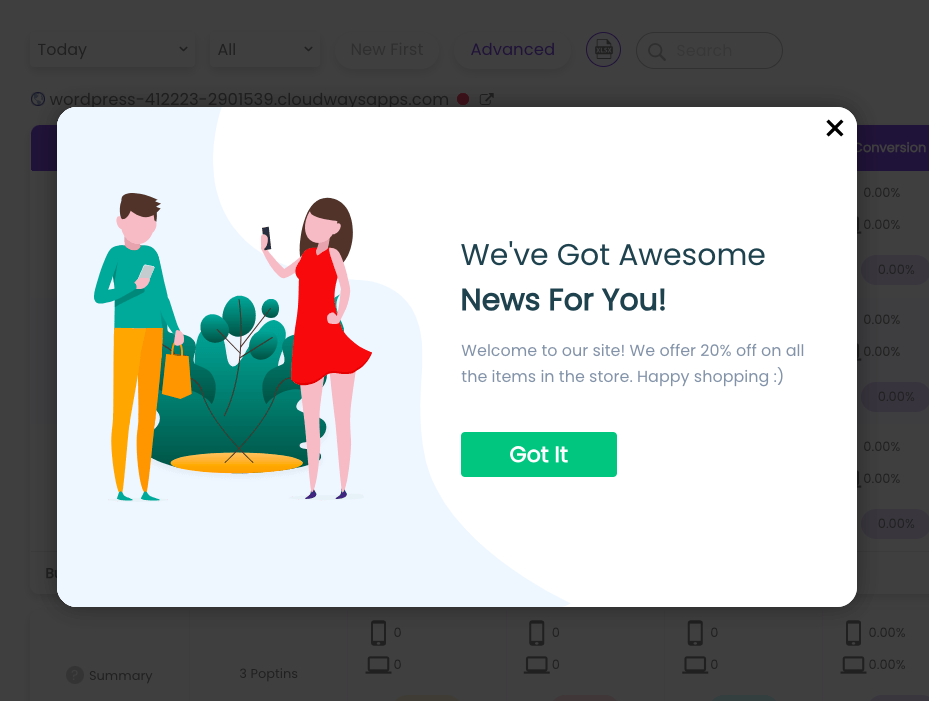
Mobile-Friendly Popups
Ensure that your popups are mobile-responsive and optimized for smaller screens. Since many customers shop on their mobile devices, it’s essential to provide a seamless and user-friendly experience across different devices.
In fact, it is important to focus on optimizing for mobile screens since there’s a possibility that we’ll have about 187 million active mobile users by 2024, in the United States alone.
A/B Testing
Conduct A/B testing to compare the effectiveness of different popup designs, offers, timing, and placement. You can identify the most successful popup variations and refine your strategy when you a/b test different elements of your popup.
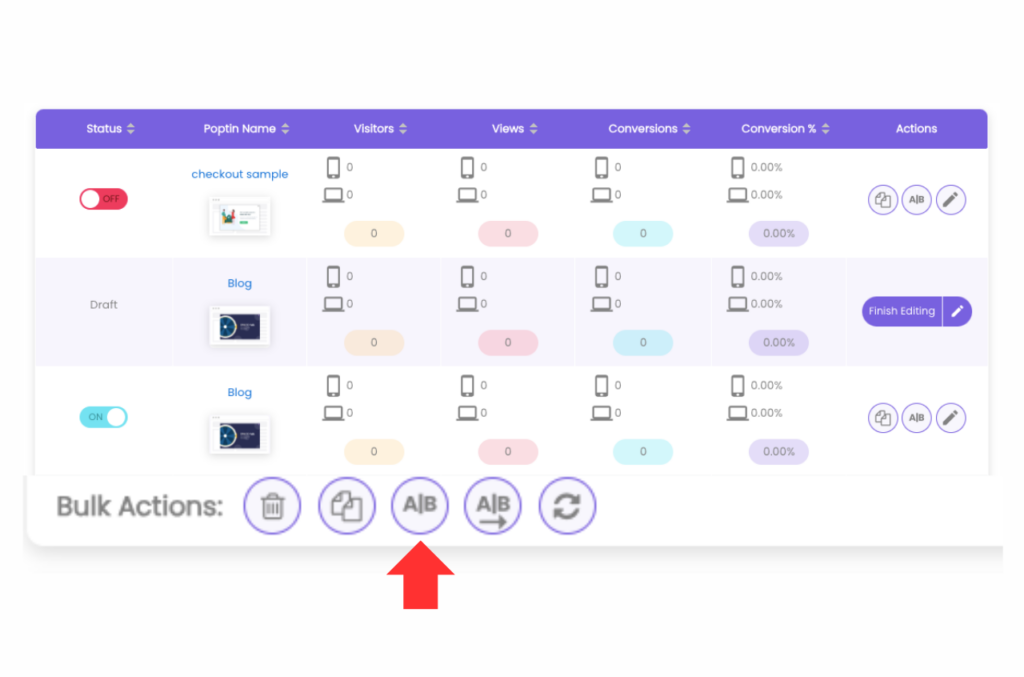
As a pro tip, be sure to test one thing at a time, so you can track what works and what doesn’t.
Target-Specific Customer Behaviour
Tailor your popups to align with the customer’s browsing behaviour and preferences. For instance, when you create a popup using Poptin, you can decide which countries, pages, traffic sources, days and times you want your popup to be displayed. You can also set specific triggers that show your popups based on an action that your customer takes.
This information could help you effectively track what pages your popups are converting on the most and what pages might need a little extra work.
Clear Call-to-Action
Ensure that your popups have a clear and compelling call-to-action (CTA) that guides customers towards completing their purchases. Use concise and action-oriented wording on buttons, such as “Complete My Order” or “Get My Discount,” to encourage a click-through.
Try Out Different Popup Displays
There are many display options for your popups, such as slide-ins or notification bars, but the best ones are the ones that do not annoy, irritate or intrude on the customer’s shopping experience.
These type of popups allows customers to continue browsing or reviewing their cart while still being aware of the popup’s presence. Know when to use lightbox popups, slide-ins, inlines, and notification bars effectively.
- Slide-In Popups: Less intrusive, appearing at the edge of the screen while allowing browsing.
- Notification Bar Popups: Horizontal bars at the top or bottom for subtle reminders or deals.
- Exit-Intent Popups: Triggered when users are about to leave, encouraging reconsideration.
- Inline Popups: Embedded within content, providing additional information near relevant details.
- Lightbox Popups: Overlays with focused interactions, showcasing videos, images, or forms.
Targeted Segmentation
Segment your audience based on their behaviour and preferences to deliver more relevant popups. For instance, you can create separate popups for new visitors, returning customers, or specific product categories, catering to their unique needs and motivations.
Continuous Optimization
Regularly review and analyze the performance of your popups to identify areas for improvement. Track metrics such as conversion rates, click-through rates, and bounce rates to assess the effectiveness of your popup campaigns and make data-driven adjustments.
As a last tip, be sure to follow up with email campaigns that remind users and customers about their unemptied carts. Here are some cart abandonment email samples to try out.
Grow with Poptin Popups
Here’s a fact that we know, you can create and design impressive popups to combat cart abandonment and increase your conversion rates with Poptin – our easy-to-use popup builder.
We offer a selection of aesthetically pleasing and functional popups that are easily optimized for both mobile and desktop screens.
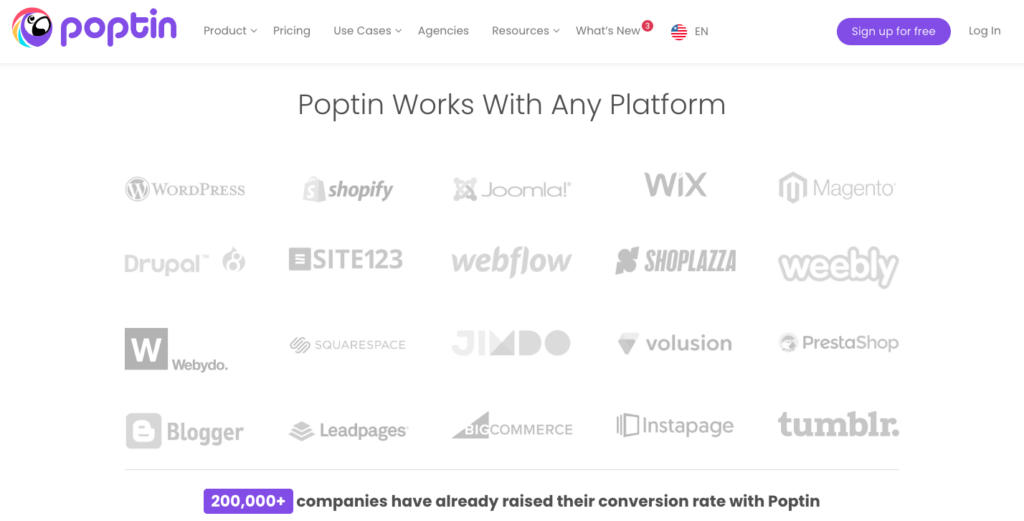
Also, you can enjoy the best features – a/b testing, customization, triggers, targeting rules, branded popups and much more when you create a popup with Poptin.
The best part is that you can create a popup in minutes, no matter what skills you have.
